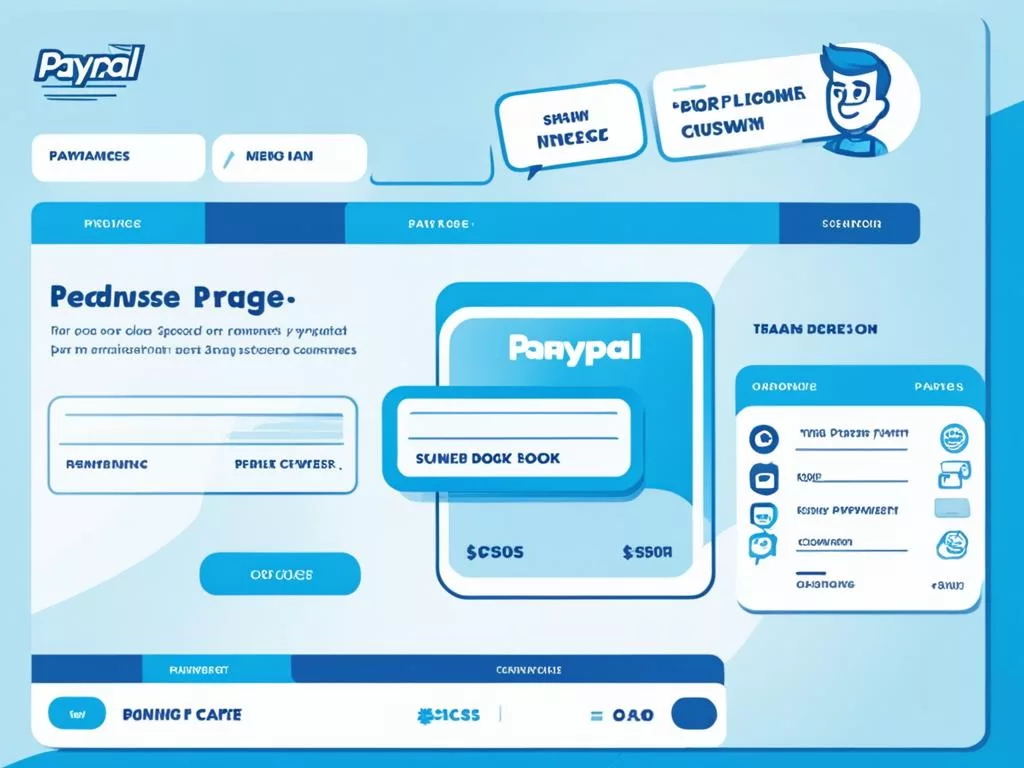As an entrepreneur in the bustling digital era, I’ve witnessed firsthand the transformative power of online payment solutions. They aren’t just the lifeblood of e-commerce; they are the architects of global connectivity. Just a few years ago, navigating the waters of digital payment methods felt like deciphering an enigma. Now, secure online transactions have become second nature, as familiar as the smartphone in our pockets. My quest to distill the complex into the accessible began with an exploration of over a hundred gateways. I gravitated towards payment gateways that exemplified reliability and innovation, platforms that didn’t just process payments but safeguarded them with unparalleled security.
Whether you’re a small business owner taking tentative steps into online retail or a seasoned e-commerce veteran, the 2024 landscape of e-commerce payment processors unfolds with promise and potential. It’s less about the transaction itself and more about the trust it builds with each swipe, tap, or click. With the likes of Apple Pay gaining popularity for its ease and safety1, and services like Tap to Pay on iPhone revolutionizing contactless payments with no extra hardware for businesses1, the dawn of effortless and adherent commerce is upon us.
Let me guide you through the forest of 5 options to take online payments—each a path leading to a realm where convenience meets security. Embrace the shift with me as we unfold the narrative of commerce in 2024, where every transaction is a story of connection, every gateway a bridge to a customer’s loyalty.
Understanding Online Payment Solutions
Navigating the ecosystem of online payment solutions has become a cornerstone for e-commerce success. As a professional delving into the intricacies of payment gateways, I’ve come to appreciate their critical role in enabling secure online transactions. These digital intermediaries are not just about processing payments; they are instrumental in upholding the integrity of sensitive financial data in accordance with PCI-DSS standards2. Given the diverse landscape of payment gateways, it’s paramount for businesses to opt for ones that not only align with bank-provided banking products but also offer additional, tailored capabilities from investment to credit facilities, such as those managed by Merrill Lynch affiliates linked with Bank of America Corporation2.
When I consider 5 options to take online payments in 2024, one must-factor is the financial aspect. Businesses must account for the typical credit card processing fees, averaging 2–3% of the transaction amount3, while also preparing for the high interest rates on unpaid balances that can range from 15% to 25% APY3. These costs can significantly affect the bottom line, which is why payment processors that offer competitive rates and services that match a company’s creditworthiness are critical23.

Moreover, engaging in secure online transactions stretches beyond mere monetary transfer; it’s about adopting a system equipped for modern-day challenges. Mobile payments, for instance, have surged due to their convenience, enabling fast transactions with a simple tap and authentication from a smartphone3. However, these are not without limitations, as their acceptance is not universal, varying by vendor and location3. Similarly, while debit cards offer a direct link to one’s bank account, they may provide limited fraud protection, which underscores the need for a nuanced understanding of different payment methods3.
Given these factors, I have identified a suite of “5 options to take online payments – 2024” that melds these diverse functionalities into a coherent system. From mitigating ATM withdrawal fees to accommodating multiple payment forms, including checks with minimal expense and efficient electronic fund transfers for substantial or recurring transactions, I prioritize payment processors that can manage this array effectively.3 In the evolving landscape of digital payments, flexibility, and comprehensive service are the hallmarks of excellence.
Therefore, when I evaluate payment gateways and payment processors, my analysis always circles back to two key aspects: transaction security and financial prudence. It is essential to use gateways that adhere to PCI-DSS standards while providing a seamless checkout experience. The right choices today will help e-commerce businesses remain both secure and financially sound amidst the dynamic currents of the digital economy.
Exploring 5 Options to Take Online Payments – 2024
In my exploration of the most efficient digital payment methods available to modern businesses, I have thoroughly examined an array of e-commerce payment processors that are designed to cater to diverse commercial needs. I am committed to helping business owners navigate the ever-evolving landscape of payment gateways, and in this quest, I have identified five standout options poised to shape online payment systems in 2024. These include industry leaders such as PayPal, Stripe, Shopify Payments, Square, and HubSpot Payments, each bringing unique features to the table.

For entrepreneurs taking their first steps in the digital market, PayPal remains a beacon of simplicity within the labyrinth of 5 options to take online payments – 2024. Its user-friendly interface allows newcomers to accept payments with minimal friction. Stripe’s forte lies in offering businesses an expansive suite of flexible analytics tools. This makes it an unparalleled asset for those who make data-driven decisions integral to their operations. Shopify Payments delivers a seamless all-in-one e-commerce solution, embedded within the Shopify platform for maximum efficiency and ease of use.
Square presents as the hybrid solution for contemporary enterprise, excelling in servicing both online and offline sales with equal prowess. Square’s unified system facilitates a fluid transition between physical storefronts and digital carts, a necessity for modern retail. HubSpot Payments primarily courts B2B businesses, focusing on features that streamline transactions among corporate entities.
By integrating these e-commerce payment processors into your digital storefront, you stand to benefit from the tailored advantages each service provides. It’s critical to consider the unique facets of your business and customer base when selecting the payment gateway that will not only process transactions but also enhance the overall user experience. In this digital age, the right choice can serve as a catalyst for growth and customer satisfaction.
To ensure your selection aligns with fiscal prudence, be mindful of the fee structures inherent to each platform. For instance, while short-term payment plans may incur no setup fee for individuals, long-term payment plans with Direct Debit involve a setup fee, which can differ significantly depending on the mode of application—a mere $31 for online applications as opposed to $107 for those via phone or mail4. These economic considerations are paramount when determining the most cost-effective solution for your business.
Moreover, low-income individuals may find solace in the waiving of setup fees for long-term payment plans and revisions, offering a respite for those below 250% of the federal poverty level4. Businesses must discern the user experience and not just the bottom line; this includes understanding the impact of processing times—such as the promptness of same-day one-time payments when made before the 5:00 p.m. cut-off5, or the next-business-day processing offered by services like GR PayIt6.
In conclusion, as we gaze into the not-so-distant future of 2024, it’s evident that the digital payment landscape is ripe with options. However, it is the astute business owner who will look beyond mere transactional capabilities and seek out a payment gateway that harmonizes with their business model, elevating the customer experience while streamlining internal processes. As I continue to dissect and analyze the revolution in digital payment methods, my aim is to arm you with the knowledge you need to make an enlightened choice among the 5 options to take online payments – 2024.
PayPal: A Popular Choice for First-Time Users
As a seasoned copywriting journalist with an eye on the pulse of online payment solutions, I’ve witnessed PayPal’s significant growth. It currently manages approximately 435 million accounts and accounts for over $22 billion in transactions7. PayPal caters exceptionally well to PayPal for first-time users, ensuring secure transactions with a user-friendly interface that’s trusted worldwide.
Part of its allure lies in its transactional flexibility—offering options like Pay in 4 for orders between $30 and $1,500 and managing large transfers up to $60,000 per transaction for verified accounts7. Its global outreach is undeniable, being available in over 200 countries, and it’s often the first foray into online payments for many, hence solidifying its relevance in the 5 options to take online payments – 2024 agenda.

However, PayPal fees are an aspect that deserves attention. There’s a 2.90% + fixed fee for personal card transactions and fees can increase significantly for international transfers and currency conversions—up to 5% and 4%, respectively7. For businesses, PayPal’s fee structure might seem daunting, but it’s a trade-off for worldwide accessibility and top-notch security measures.
Speaking of security, let’s delve into its stronghold. The advent of robust fraud protection and secure vaults is not just a trend but a necessity in today’s digital economy. With PayPal, users can feel at ease with their transactions being safeguarded by cutting-edge technology.
But what about the competition? Venmo, also owned by PayPal, focuses on a younger demographic with 90 million active users and a substantial portion in the 18–39 age range. Interestingly, 47% of Venmo users have used the platform to purchase items8. Venmo’s appeal rests on its ease of use and social features, yet PayPal remains a frontrunner for more extensive online payment solutions.
PayPal has honed its features to serve as a multifaceted tool for financial transactions in the ecommerce space. Users have grown to expect the conveniences PayPal offers, such as instant withdrawals with a fee of 1.75% of the transferred amount, and the simple pleasure of seeing transaction times ranging from immediate to just five business days, catering to a broad spectrum of needs7.
| PayPal Feature | Benefit | User Segment |
|---|---|---|
| Pay in 4 Option | Flexible Payments | E-commerce Shoppers |
| Instant Withdrawals | Immediate Access to Funds | Small Business Owners |
| Large Transfer Limits | High-Value Transactions | Verified Account Holders |
| Robust Fraud Protection | Security and Trust | All Users |
PayPal’s vision to democratize financial services resonates with the trends where digital wallets account for a significant slice of online transactions—nearing half globally—with projections pointing towards an upward trajectory to 54% by 20268. PayPal has established itself as a cornerstone among online payment solutions, and its trajectory suggests it will continue to be an emblem of trust, convenience, and security for those stepping into the world of online transactions.
Stripe: The Go-To for Customization and Analytics
As I navigate the complex landscape of online payment solutions, Stripe stands as a beacon for businesses seeking customization and precise analytics. Known for its robust API and extensive third-party integrations, Stripe offers online payment solutions that skillfully balance secure transactions and user-defined automation. For the tech-savvy entrepreneur, Stripe provides a playground for payment processing, complete with unique features like Stripe’s Sigma for enhanced data analysis, costing just 2 cents per charge9.
Initiating the Stripe setup introduces you to a duo of essential configurations: the ‘api_key’ for access credentials and the ‘webhook_secret’ for secure event handling10. As someone who prizes efficiency, the default ‘webhook_delay’ of 5000 milliseconds ensures a balance between swift responses and system practicality10. Additionally, the built-in redundancy mechanism of ‘webhook_retries’, defaulting to 3, offers peace of mind during unexpected transaction issues10.
Upon proceeding to checkout, Stripe integrates itself into the ‘payment_sessions’ array within the cart object to facilitate the selection of efficient payment processors. It’s here that Stripe reveals its client-centric architecture, with payment intent and client secret tucked neatly within each ‘payment_session’10. The entire process, governed by Stripe’s React libraries and Medusa’s JS Client, echoes a seamless symphony, culminating in an effortless checkout experience10.
For e-commerce platforms that thrive on aesthetics, Stripe’s UI elements slip into your site’s design with ease. Including components like CardElement not only secures transactions but also elevates the user experience during the payment process10. And with the ‘loadStripe’ function employed outside my component’s lifeline, it negates any redundancy by avoiding multiple Stripe reloads during customer checkout10.
| Feature | Description | Stripe’s Offering |
|---|---|---|
| Per-Transaction Fees | Cost incurred with each transaction | 2.7% + $0.05, competitively low9 |
| Customization and API | Flexible system adjustments | Complex but powerful for detailed setups9 |
| Recurring Billing | Subscription management | 0.5% per transaction, favorable to alternatives9 |
| Data Analysis | Insights into transactional data | Sigma feature at 2 cents per charge9 |
Once a customer’s transaction pierces through Stripe’s safeguarded threshold, I witness the blossoming finale—order completion. Payment confirmed, the admin panel becomes a tableau of information, with details singing of customer engagements and a ‘Capture’ button standing by to process payments10. Yet, amidst this dense forest of features, something as simple as a telephone line for direct support remains conspicuously absent—a potential hurdle for those that prefer vocal over virtual support9.
Factoring in payment processing fees, which begin at a humble 2.7% plus 5 cents per transaction, Stripe positions itself as a strong contender amidst its competition9. Its lack of a monthly fee further sweetens its appeal, carving a niche for businesses that gravitate towards powerful analytics and the freedom from regular fixed costs9.
While competitors like Square and PayPal offer more user-friendly platforms with hands-on support, Stripe’s promise is in its power—a power catalyzed by those with the vision to mold its plethora of tools into their own image of an online payment ecosystem. For those of us who relish diving into detailed dashboards and tweaking settings to perfection, Stripe is the stalwart companion in the quest for peak e-commerce performance and secure transactions.
Shopify Payments: Seamless Integration for E-Commerce
As we surge into 2024, Shopify Payments stands as a monumental pillar in the e-commerce landscape, acting as an all-in-one e-commerce solution for online businesses keen on securing swift and secure transactions. Shopify Payments for eCommerce allows merchants to bypass complex integrations with its direct tie-in to the Shopify platform11, illustrating a streamline in the shopping and checkout experience that is paramount for both customer satisfaction and conversion optimization.
The simplicity of Shop Pay, an integral component of Shopify Payments, empowers sellers with up to a 50% increase in conversion rates when juxtaposed with guest checkout12, a reflection of the undeniable demand for seamless online payment solutions. Adding to this, a lower funnel conversion lift by 5%12 and a 1.72 times higher checkout-to-order rate than traditional checkouts12 entail a strategy that can significantly reduce the average 70% cart abandonment rate12.
My audit of Shopify Payments reveals extensive available options, extending to mobile with 65.7% of e-commerce retail sales in 2022 completed on mobile devices12. This statistic alone exemplifies the pivotal role of Shopify Payments in boosting business agility and reach in the digital marketplace. Diving into international markets, it’s apparent that 70% of e-businesses are looking at global sales13, a task that Shopify Payments satisfies with coverage in 23 countries11.
I must point out the allure of Shopify Payments’ transparent pricing, found appealing by the masses given the Basic plan’s popularity11. It’s been engineered with an eye toward scalability, catering to startups with the Starter plan to large enterprises with the Advanced plan, demonstrating an awareness of the variegated needs across the spectrum of digital commerce11.
With a responsible nod to security, Shopify Payments ensures Level 1 PCI DSS compliance11, fortifying trust in this gateway as a champion of secure transactions. The live chat support, community forum, and help center11 stand as testaments to Shopify Payments’ commitment to iron-clad support, reassurance for any merchant traversing the journey of online sales.
The committed drive towards diversity in payment methods resonates with a finding that a lack of preferred payment options could lead to cart abandonment in up to 9% of shoppers13. Shopify Payments’ multifaceted approach aligns with the unique payment landscapes of different regions, tailoring options to local preferences and contributing to minimized dispute rates through strategic payment method offerings13.
In light of such features and capabilities, there is a clear signal that positions the 5 options to take online payments – 2024 with Shopify Payments as an undisputed pathfinder, an echo from the hallways of e-commerce dynamism.
| Feature | Shopify Payments Plan | Price | Perks |
|---|---|---|---|
| Transaction Fees | Starter to Advanced | 5% + 30¢ to 2.4% + 30¢ | Lower fees at higher plans11 |
| Global Sales Support | Available in 23 countries | Varies by country | Caters to international markets13 |
| Staff Accounts | Up to 15 with Advanced plan | Based on chosen plan | Multiple user management11 |
| Shipping Discounts | Up to 88% | Based on chosen plan | Cost-saving benefits11 |
| Payment Security | Level 1 PCI DSS compliance | Included with plan | High-standard secure transactions11 |
| Support Channels | 24/7 Live Chat and more | Included with plan | Comprehensive assistance11 |

Square: The Solution for Online and Offline Sales
My exploration into the sphere of online payment solutions led me to Square, a dynamic service that caters impeccably to businesses that oscillate between digital and physical storefronts. Square’s inherent strength lies in its versatility—a basic website builder facilitates rapid construction of an online platform, and a clear-cut, no-contract policy makes it an appealing choice for sellers. With Square’s free foundational POS system bolstering both online and brick-and-mortar establishments, businesses can leverage its robust features without the apprehension of hidden charges14. Particularly impressive is the Square POS system’s capacity for managing inventory and sales data across all platforms, which I’ve found to be critical for businesses that maintain both online and offline presence.
Drilling down into financial specifics, Square’s processing fees remain forthright: 2.6% + $0.10 for card-present transactions and 2.9% + $0.30 for online payments, providing businesses with predictable costs15. This transparent fee structure is supplemented by a suite of free features that include digital gift cards and indispensable team management tools, ensuring businesses avoid unnecessary overhead while expanding functionality14. In my analysis, these attributes cement Square’s position as a leading payment solution within the competitive landscape of online payment options.
Reflecting on the nuanced contours of e-commerce and secure transactions, my recommendation leans towards Square for online and offline sales, especially for those yearning to merge the simplicity of a basic website builder with reliable payment processing. The cohesive ecosystem Square offers is not just a convenience but an essential component for businesses striving to streamline their sales operations in 2024. I believe that this well-rounded approach is why Square is among the 5 options to take online payments this year, marking it as a standout candidate for businesses determined to excel in an interconnected marketplace.
Source Links
- https://www.apple.com/apple-pay/
- https://www.bankofamerica.com/smallbusiness/resources/post/how-to-accept-payments-online/
- https://www.investopedia.com/terms/p/payment.asp
- https://www.irs.gov/payments/payment-plans-installment-agreements
- https://www.deere.com/en/finance/financing/account-management/payment-options/
- https://www.grandrapidsmi.gov/Payments/WaterSewer-Bill-Payments
- https://time.com/personal-finance/article/paypal-review/
- https://www.paypal.com/us/brc/article/8-payment-technology-trends-2024
- https://www.forbes.com/advisor/business/software/top-stripe-alternatives/
- https://docs.medusajs.com/plugins/payment/stripe
- https://www.forbes.com/advisor/business/software/shopify-payments-review/
- https://www.shopify.com/blog/1-click-checkout
- https://stripe.com/guides/payment-methods-guide
- https://www.forbes.com/advisor/business/software/square-vs-shopify/
- https://time.com/personal-finance/article/best-payment-gateways/

